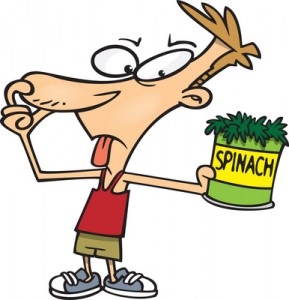Ever eat cooked spinach and feel like your teeth have been coated by chalk?
According to the May & June 2011 edition of Cook’s Illustrated, oxalic acid in spinach is released when the spinach’s cell walls are ruptured – first by cooking and then by chewing.
Tiny calcium oxalate crystals are formed when the released oxalic acid combines with the calcium in your saliva and calcium in the spinach. Those tiny crystals cling to your teeth, coat them, and leave behind a dry, dusty feeling.
This kinda yucky tooth coating is intensified when the spinach is combined with milk and cheese products since they have a lot more available calcium than your saliva. The dairy calcium will combine with the spinach’s oxalic acid, too, making more of the offending crystals.
If this sensation really bugs you, try eating your spinach raw so there is less oxalate from cooked ruptured spinach cells available to form the oxalate crystals that cling to your teeth.


Leave a Reply